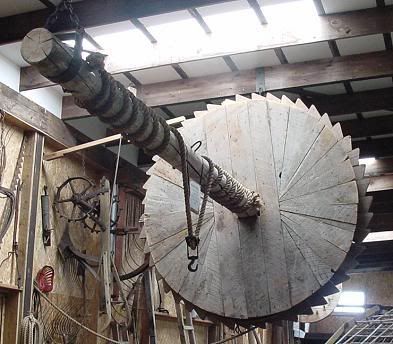
Larger image
2. An eagle corn sheller, only four of these are know to exist in the U.S., patented in 1870, number 99,106.
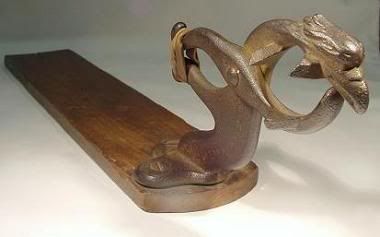
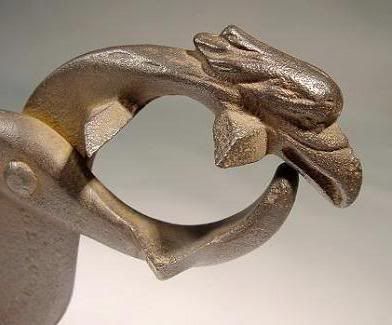
More corn shellers:
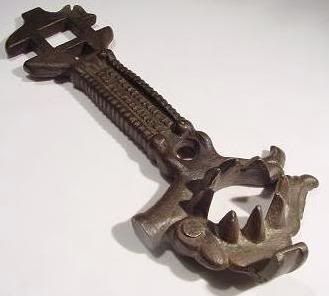
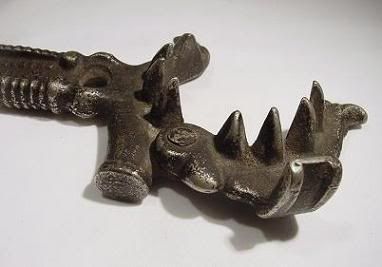
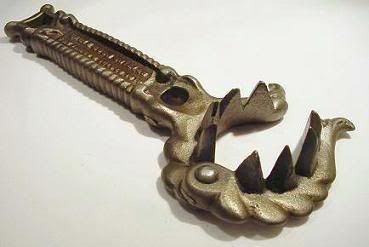
3. Dehorning shears for use on a bull, patent number 480,246:
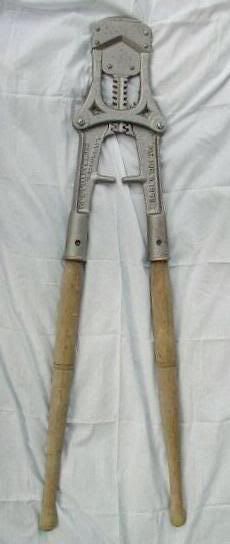

4. A chicken beheader, there is a sharp blade concealed by the large part at the top right, a plunger is inserted into the small hole at the end of the barrel to set the spring which is attached to the blade.
To read more details about how it works, see patent number 507,792.
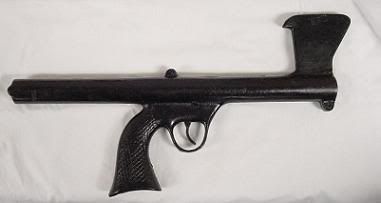
Larger image
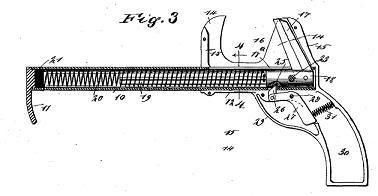
5. These tools were used to hold open a horse's mouth so that medicine could be inserted.
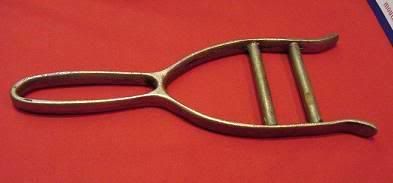
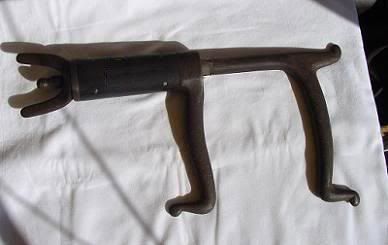
6. This was placed onto the head of a calf when they wanted it to stop nursing on the cow, the cow would get poked by the spikes and push the calf away, patent number 1,882,232. An easier solution would be to put them in separate pens, but apparently that wasn’t always an option.
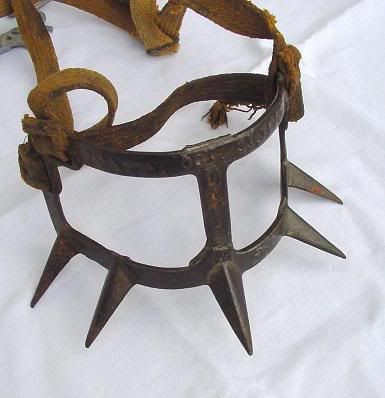
Larger image
A couple other versions of the same device:
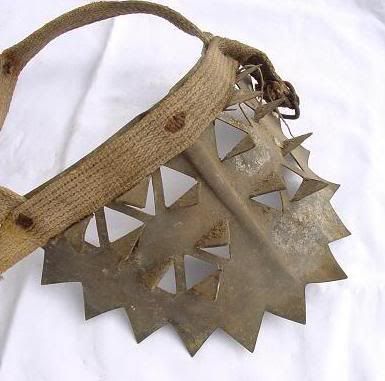
Larger image
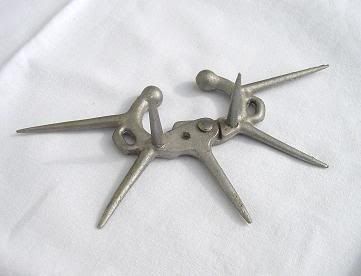
7. "The X Rays Egg Tester", manufactured by The Reeves-Rigling Egg Tester Co., Hamilton, Ohio, Patent number 940,361. Also known as an egg candler, these were used for detecting embryonic development or for separating shell eggs.
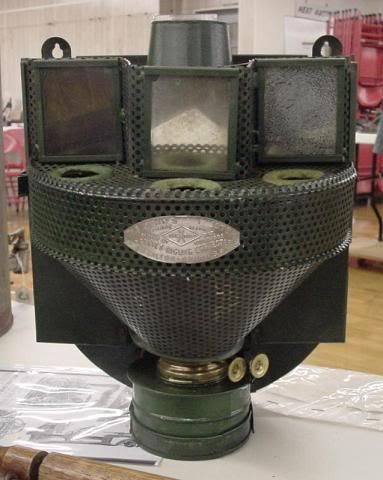

8. A Nellis hay harpoon, it was well suited to the long-stemmed timothy and other grasses commonly used for hay years ago, these harpoons were used along with some rope and pulleys to get the bales up to the loft, patent number 143,775.
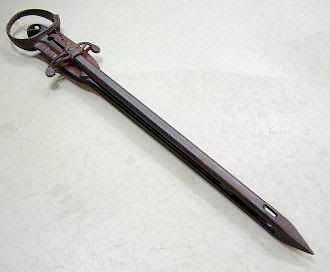
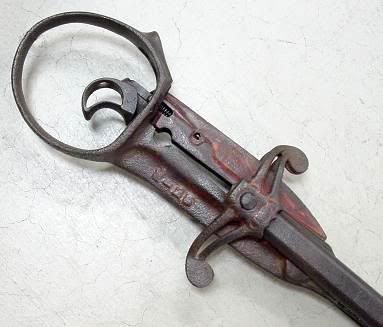

9. An ear notcher, the farmer would notch the ear of each hog differently, in order that records could be kept on their growth rate and other items.
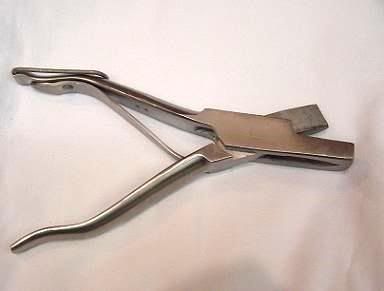
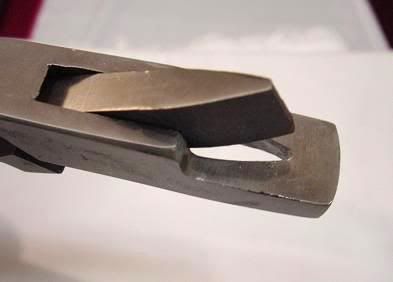
10. A well tile placing apparatus, 11" diameter when expanded, 10" diameter when collapsed. Wells were lined with tile which were placed on the outside of this device and lowered down, when in place, pulling on the rope collapsed the device and it was pulled up, leaving the tile behind. Patent number 435,594 shows a different tool that was used for a similar purpose.
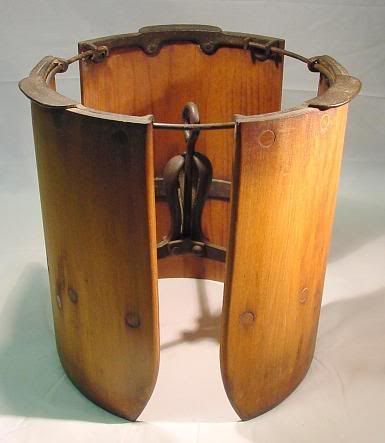
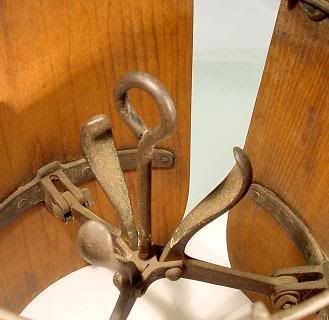
11. A bull blinder, one way of preventing a dangerous bull from charging was by obstructing his vision with a blinder, forcing him to walk with his head up. There are slots in the lower part of the mask so he can see the ground but not straight ahead.
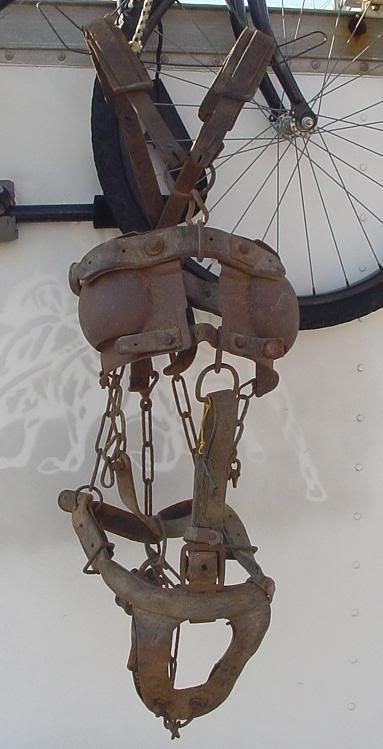
12. A birthing tool, for assisting in the delivery of a newborn sheep or hog.
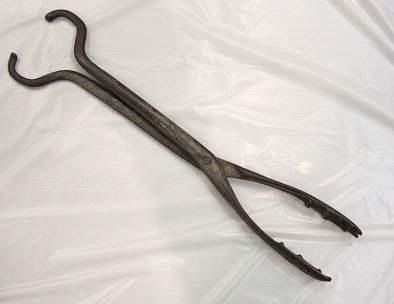
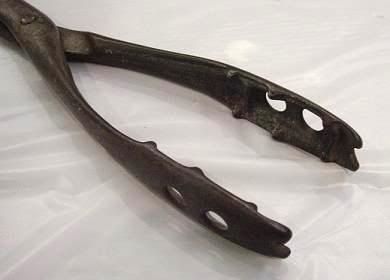
13. Years ago some fences weren’t made very well, and if you had an ornery bull or cow that kept getting out, they were made to wear an animal poke. It’s difficult for them to climb or graze through a fence while wearing one of these around their neck. These are also used to stop horses from jumping over fences.
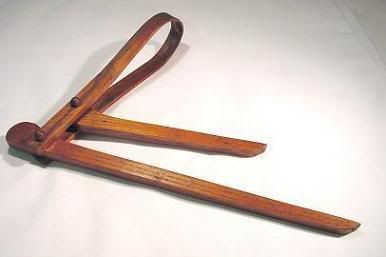
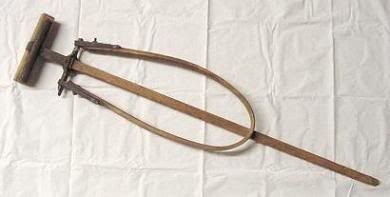

14. I didn't realize that there was a need for such a product, but apparently when milking cows, serious eye injury can occur from the switching of the cow tail. The device below is a cow tail holder, when in use the larger end clamps to the leg and the other end attaches to the tail.
It was patented in 1891, number 444,428, over 100 other patents for a wide range of contraptions that perform the same task can be found on Google patents.
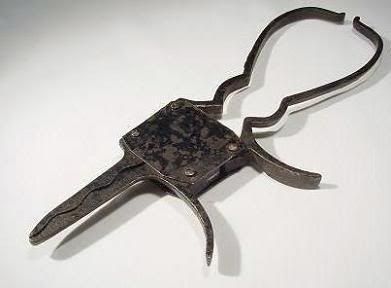
According to this site, the inventor of a cow tail holder estimated that between 15,000 and 20,000 milkmaids or milkmen received severe eye injuries each year.
More information on the hazards of dairy farming can be seen here.
15. A coal lifting device, used when adding coal to a fire, it protects the hand from flames and also from contact with the coal, patented in 1896, number 567,087.
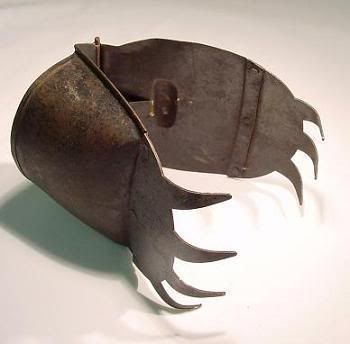
16. Cow kickers, these were placed on the cow's back legs so she couldn't kick the person milking her.
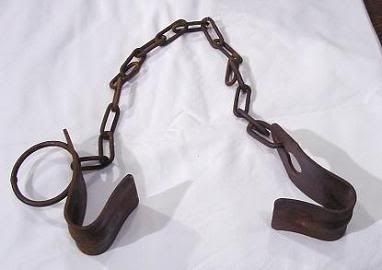
17. A Fisher humane chicken killer, patent number 2,081,229.
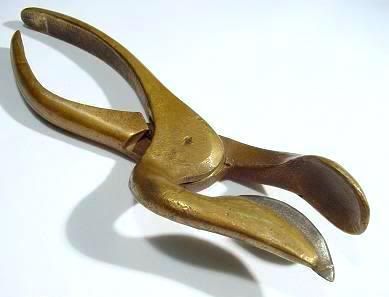
18. An ox shoe:
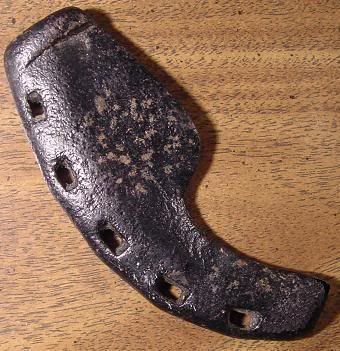
19. These are horn weights for a bull. To keep bulls from seriously injuring each other when fighting, these weights were placed on the horns to make the ends point downward. They were also used to fix mismatched horns, where one horn grew slightly higher than the other. If a horn weight was left on for just a few weeks, it would easily change the higher horn's angle of growth. Modern versions can be seen here.
Very similar to patent number 1,287,540.

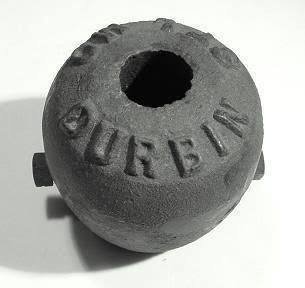

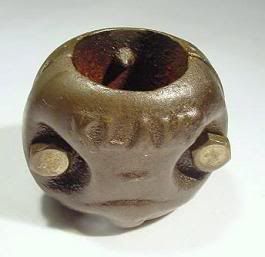
20. An ox bow pin, patent number 47,149:
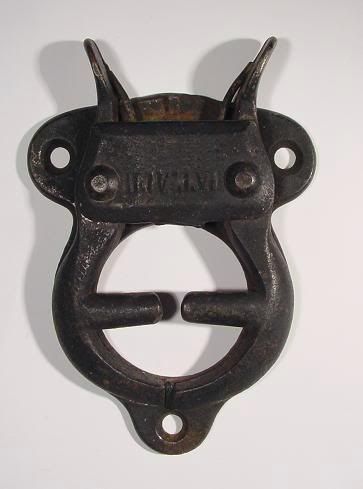
It keeps the bow attached to the yoke:
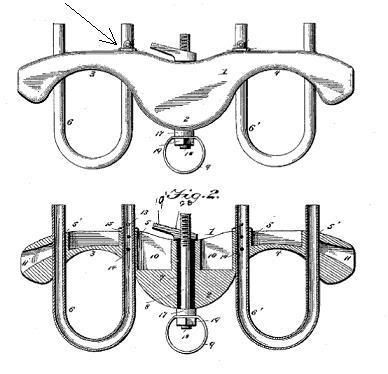
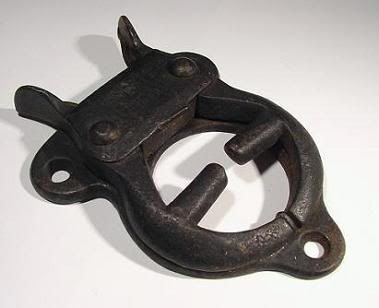
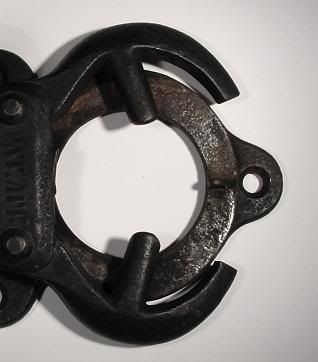
21. A horse-powered treadmill, used to run a grain threshing machine, or other farm equipment:
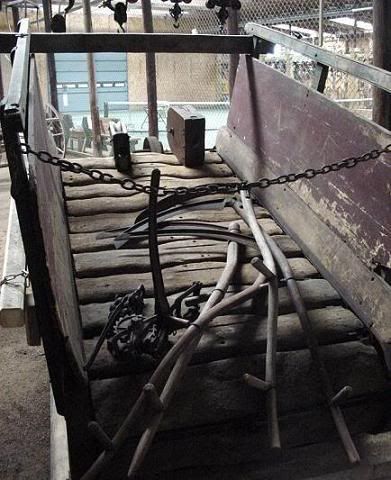
Larger image
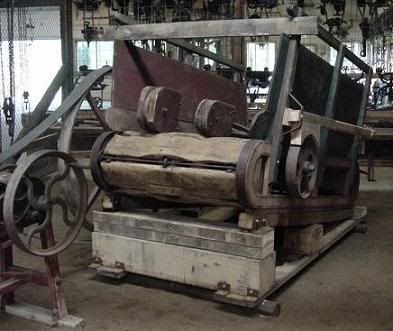
Larger image
22. Anti-rodent device or mouse killer pistol, invented in 1862. To operate: Pull back the hammer and insert the safety, place a percussion cap on the nipple, load 10 grains of black powder into the barrel along with some paper wadding, put some peanut butter on the bottom of the trigger, place the device in a good location, set the sear, and finally, remove the safety.
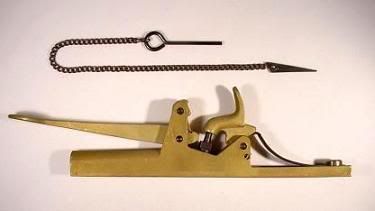
Larger image
With a percussion cap:
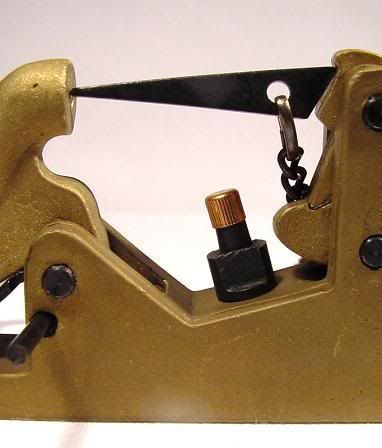
Note the safety sticking out of the hole on the lower left.
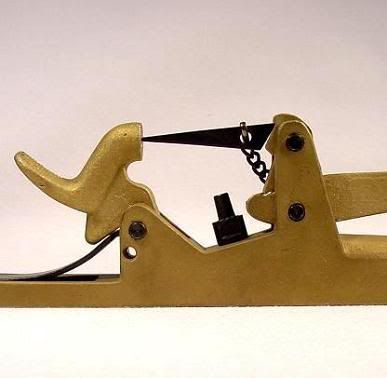
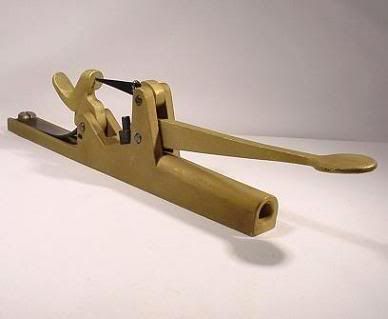
23. A bull staff, patent number 1,226,201, used to safely lead a cantankerous bull by attaching the end to the ring in the bull's nose, according to the patent, the spurs on the hook are "for the usual purpose". The patent for a different bull staff explains:
"If on the other hand, the animal misbehaves, the handle is oscillated to bring the serrations against the bridge of the nose of the beast, whereupon the latter will immediately desist, and at all times will be under the control of the attendant."
From patent number 984,157.
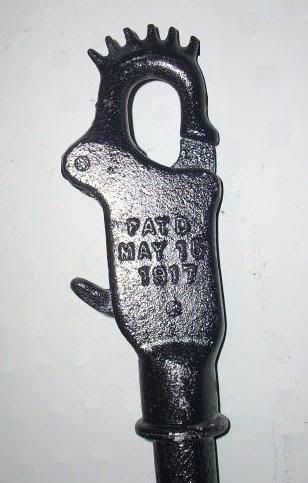
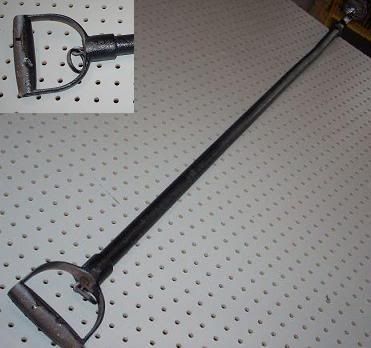
24. A bee hive or bee gum, from this site:
Honey was not the only reward for cutting a bee tree. The hunter could also claim the bees. They were kept in home-made structures called gums, made by cutting 3-4 foot sections from hollow sweet-gum logs (or some other type of wood), burning the interior until the surface was slick, cutting one or two small inverted V’s in the bottom as passageways for the bees, and covering the slanted top with a rough plank roof. A cross piece was nailed in the middle for the bees to fasten their comb to.
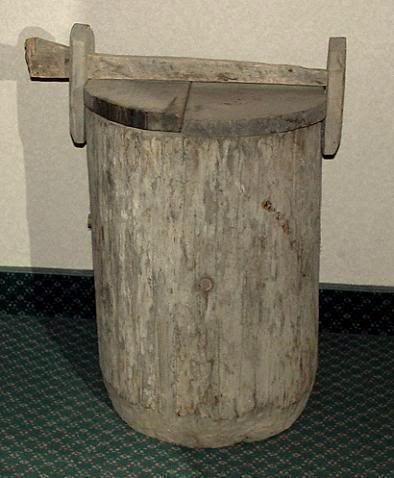
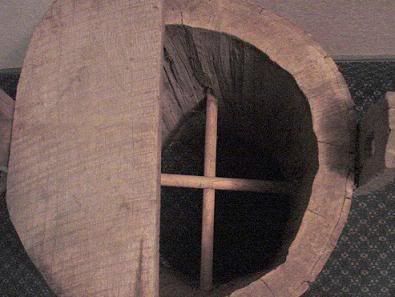
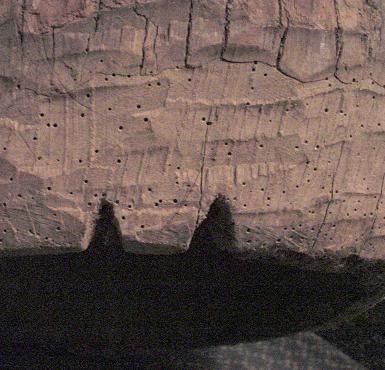
25. A bloat stick, this sharp pointed tool was poked into the side of a bloated cow to release the gas and air trapped inside, it was only used as a last resort to save the animal's life.

26. A corn harvester, for cutting corn stalks at the base without bending over, patent number 471,889, a modern version is still sold today.
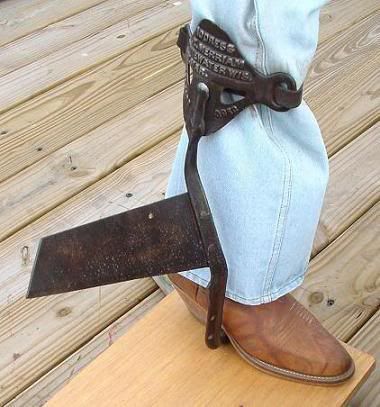
Larger image
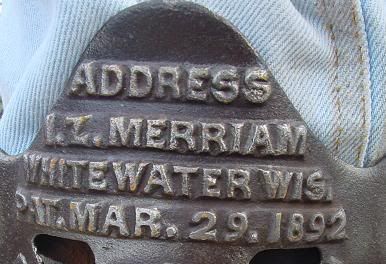
27. A powder wedge, it was filled with gunpowder or pyrodex and used to split logs too large for a sawmill to handle. The hole in the side was for the fuse, and a chain with a spike on the end was attached to the ring, with the spike driven into the side of the log so that it didn't fly too far from the explosion.
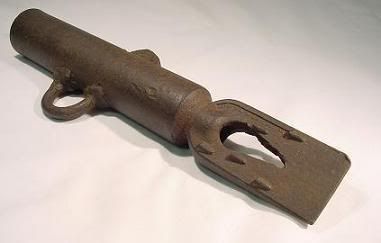
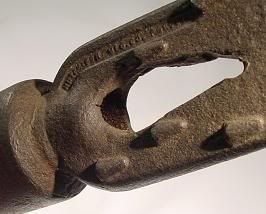

Similar to the wedge except that a hole must be drilled for it, the purpose of the flag was to make it easier to find after detonation, these could also be used on tree stumps.
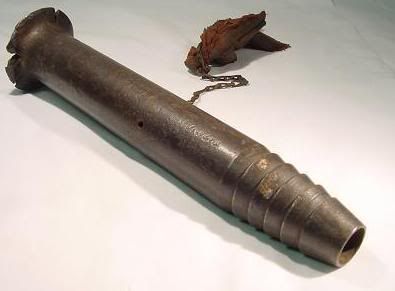
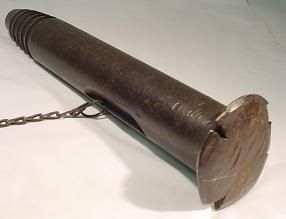
-----
A few of my other sites:
What is it?
Lots of unusual tools and other objects, feel free to submit your own photos by sending them to the address in my profile.
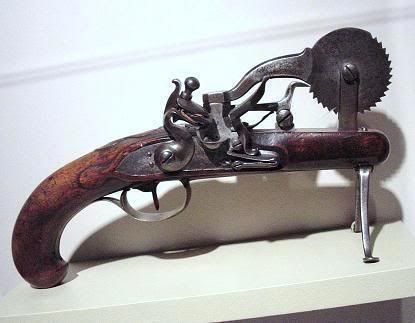
Hammer Quiz
23 uncommon hammers
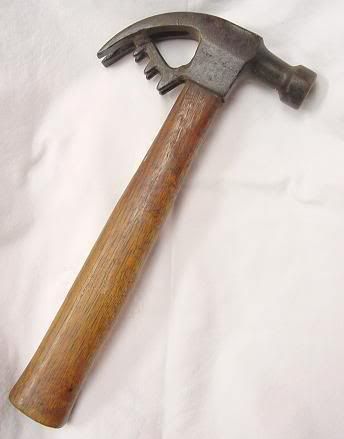
Animal Trap Quiz
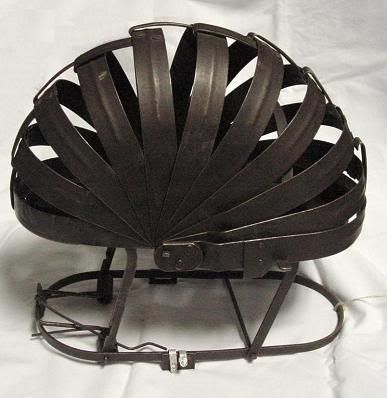
Back to the Farm Tools Quiz page
Secateurs, also known as hand pruners, are a tool that almost every gardener uses on a daily basis. By removing dead or dying branches, pruning helps plants stay healthy and encourages their growth by allowing nutrients to reach all of the plant's parts. Additionally, pruning plants improves their curb appeal. pruning shears
ReplyDelete